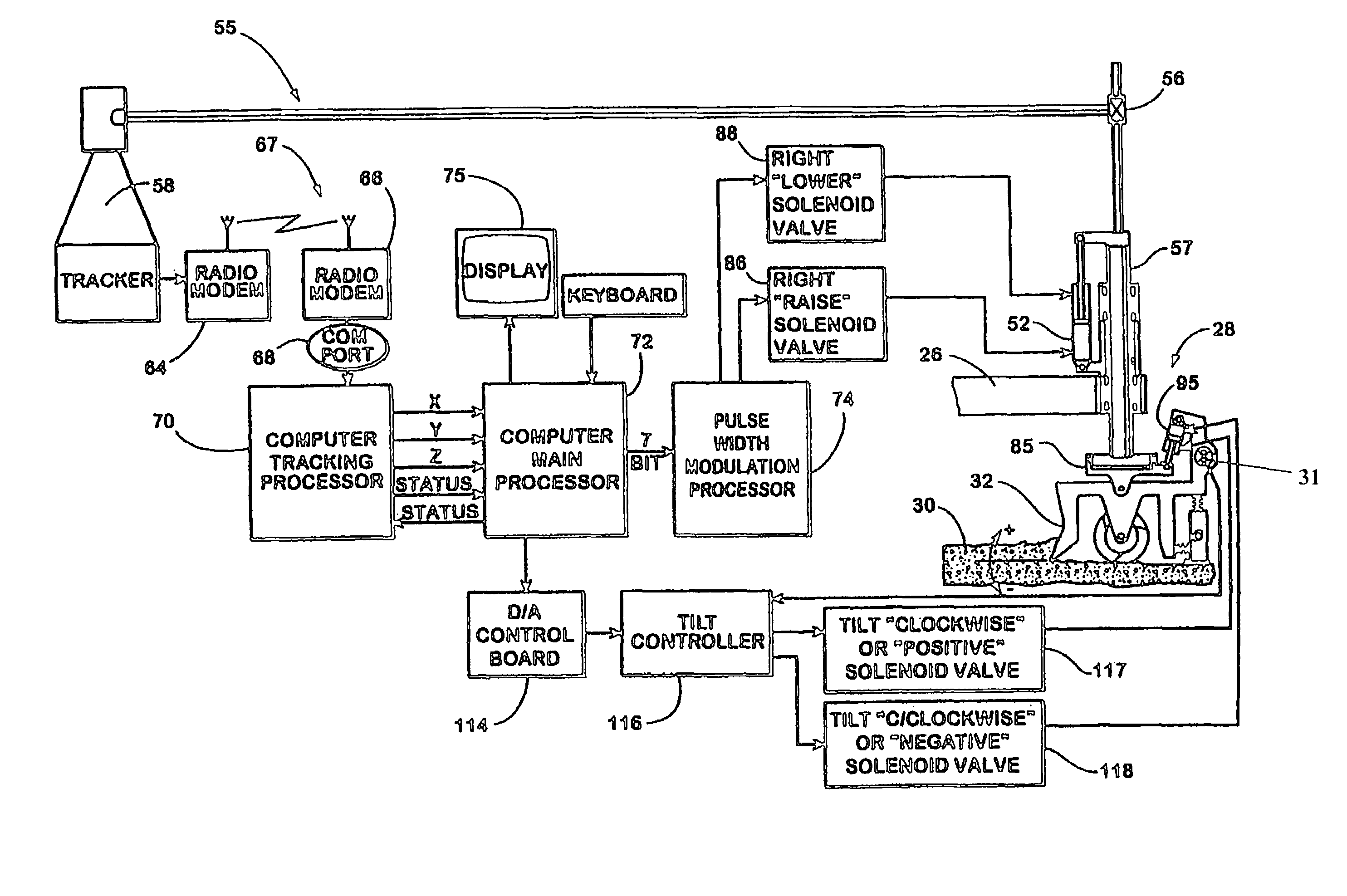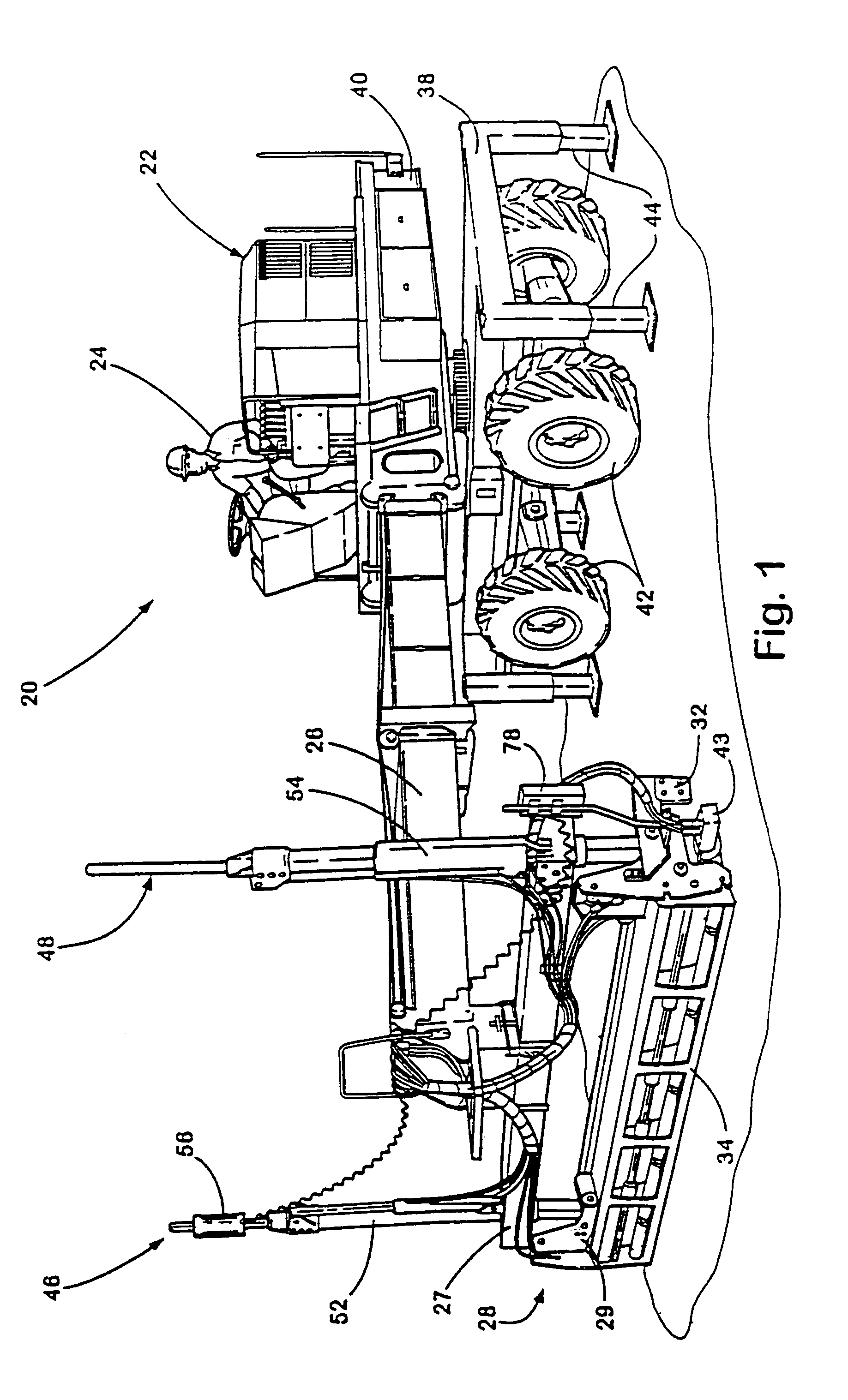Apparatus and method for three-dimensional contouring
a three-dimensional contouring and apparatus technology, applied in the field of apparatus and method for three-dimensional contouring, can solve the problems of increasing the time and expense required to establish a contoured surface, laborious process for creating physical forms, and limited use of screeding machines to smooth uncured concrete, etc., to achieve the effect of simple and effectiv
- Summary
- Abstract
- Description
- Claims
- Application Information
AI Technical Summary
Benefits of technology
Problems solved by technology
Method used
Image
Examples
Embodiment Construction
[0034]The present invention will now be described with reference to the accompanying drawings wherein like reference numerals correspond to like elements in the several drawings. A contouring device or machine 20 according to the present invention is depicted in FIG. 1. Contouring machine 20 includes a base 22 upon which an operator 24 controls contouring machine 20. Base 22 includes a platform 38 upon which an upper frame 40 is rotatably mounted. Base 22 can be moved to any desired location by wheels 42 which are powered by a motor onboard base 22. Platform 38 is securely planted at a desired location by four stabilizer legs 44 that are retractable when contouring machine 20 is driven to different locations. A boom 26 is telescopingly mounted on a front end of upper frame 40. A support beam 27 is affixed to boom 26 at an end opposite upper frame 40. A contouring member preferably includes a contouring assembly 28 mounted on support 27 by way of a right and left hydraulic cylinder 5...
PUM
 Login to View More
Login to View More Abstract
Description
Claims
Application Information
 Login to View More
Login to View More - R&D
- Intellectual Property
- Life Sciences
- Materials
- Tech Scout
- Unparalleled Data Quality
- Higher Quality Content
- 60% Fewer Hallucinations
Browse by: Latest US Patents, China's latest patents, Technical Efficacy Thesaurus, Application Domain, Technology Topic, Popular Technical Reports.
© 2025 PatSnap. All rights reserved.Legal|Privacy policy|Modern Slavery Act Transparency Statement|Sitemap|About US| Contact US: help@patsnap.com



